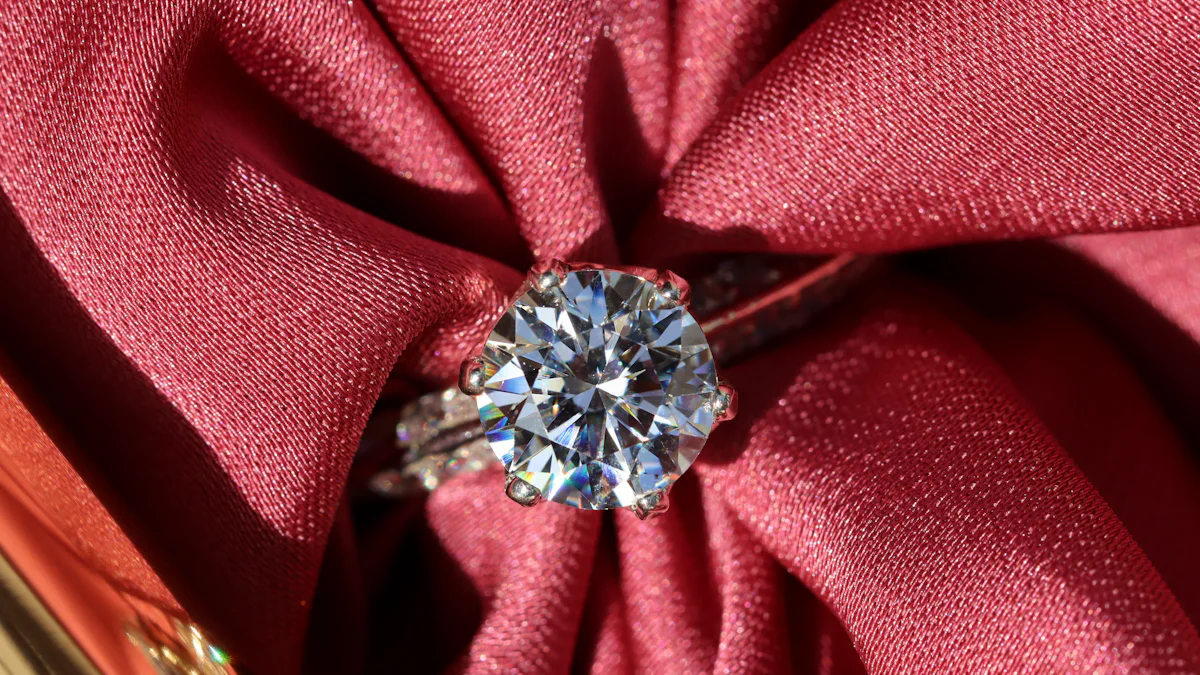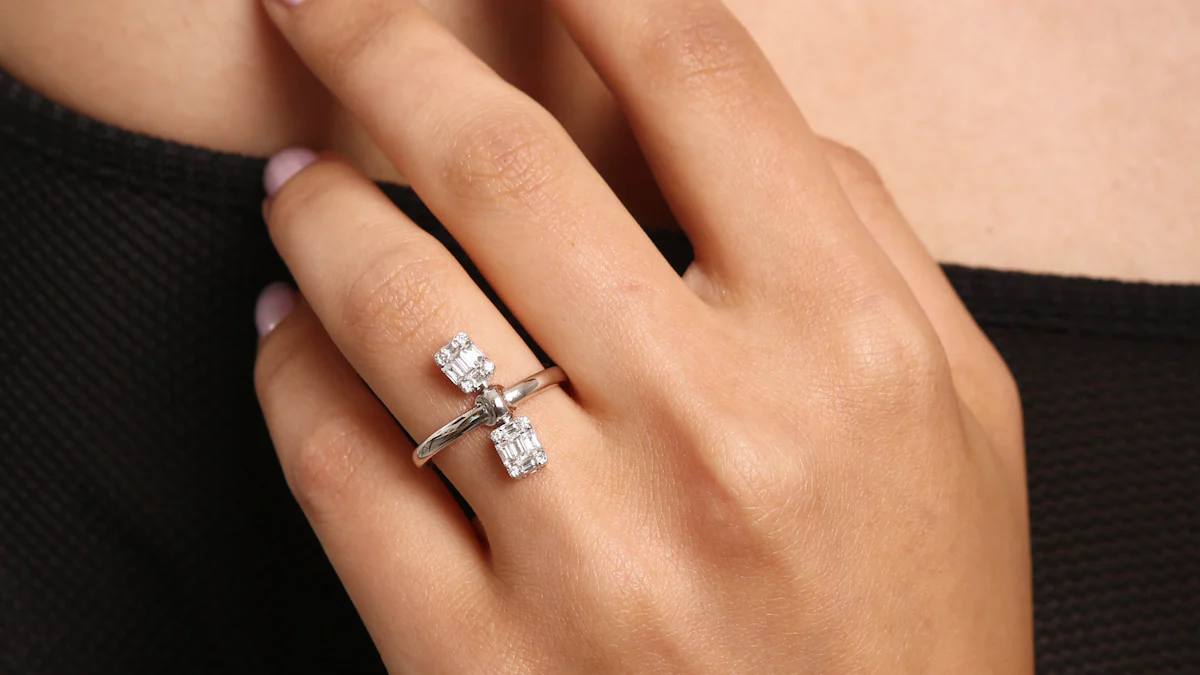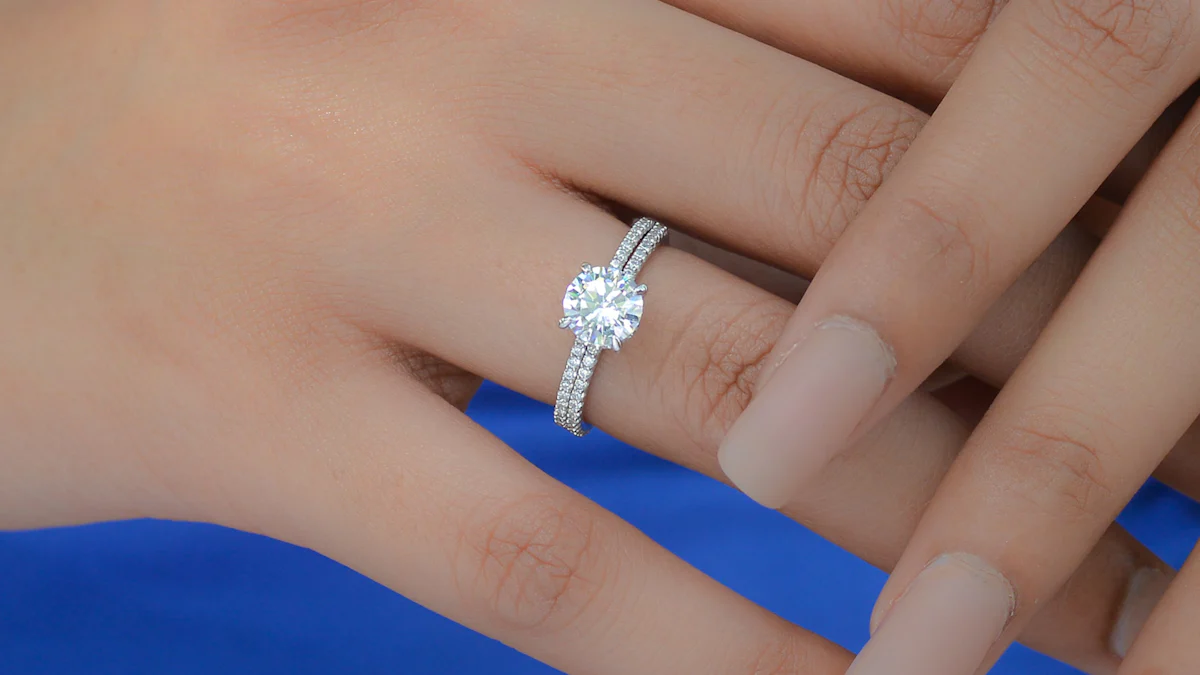2ct Diamond Rings: Natural or Lab-Grown?

When choosing a diamond, you face a significant decision: natural or lab-grown. This choice often reflects your budget, values, and personal preferences. Natural diamonds, formed over millions of years, carry a sense of rarity and tradition. Lab-grown diamonds, created in controlled environments, offer a modern, ethical alternative. Both options share identical physical and chemical properties, yet their origins set them apart. While natural diamonds dominate the market, lab-grown diamonds are gaining popularity due to their affordability and sustainability. Understanding these differences helps you make an informed decision when selecting a 2ct diamond ring.
Key Takeaways
- Understand the difference: Natural diamonds are formed over billions of years, while lab-grown diamonds are created in weeks, offering a more affordable and ethical option.
- Consider your budget: Lab-grown diamonds can cost 50% to 90% less than natural diamonds, allowing you to choose a larger or higher-quality stone within your budget.
- Evaluate environmental impact: Lab-grown diamonds are a more sustainable choice, as their production avoids the ecological damage associated with mining natural diamonds.
- Reflect on personal values: If ethical sourcing and sustainability are important to you, lab-grown diamonds provide peace of mind without compromising on quality.
- Think about long-term goals: Natural diamonds tend to retain their value better over time, making them a more suitable investment if resale potential is a priority.
- Request certification: Always choose certified diamonds, whether natural or lab-grown, to ensure quality and transparency in your purchase.
- Make a choice that resonates: Ultimately, select a diamond that aligns with your values, preferences, and the significance you attach to the ring.
Understanding Natural and Lab-Grown Diamonds

What Makes a Diamond "Natural"?
Natural diamonds form deep within the Earth over billions of years. They originate under intense heat and pressure, transforming carbon atoms into a crystalline structure. This process occurs naturally in the Earth's mantle, making each diamond a unique product of time and nature. Miners extract these diamonds from the Earth, often through large-scale mining operations. The rarity of natural diamonds contributes to their value and appeal.
Natural diamonds often contain trace elements, such as nitrogen, which give them distinct characteristics. These elements can influence a diamond's color and clarity. While these imperfections may seem minor, they add to the individuality of each stone. When you choose a natural diamond for your 2ct diamond ring, you are selecting a piece of Earth's history that has taken billions of years to form.
How Are Lab-Grown Diamonds Created?
Lab-grown diamonds replicate the natural diamond formation process but in a controlled environment. Scientists use advanced technology to mimic the high-pressure and high-temperature conditions found in the Earth's mantle. Two primary methods create lab-grown diamonds: High Pressure High Temperature (HPHT) and Chemical Vapor Deposition (CVD).
- HPHT Method: This method compresses carbon under extreme pressure and heat, similar to natural diamond formation. The result is a diamond that is chemically and physically identical to a mined diamond.
- CVD Method: This process involves placing a carbon-rich gas in a chamber and heating it to high temperatures. Carbon atoms bond to a diamond seed, layer by layer, forming a diamond over several weeks.
Lab-grown diamonds share the same chemical structure, physical properties, and optical brilliance as natural diamonds. They are made entirely of carbon, just like their natural counterparts. However, lab-grown diamonds lack the trace elements, such as nitrogen, found in natural diamonds. This absence makes them purer in composition, often classified as Type IIA diamonds, which are rare among natural stones.
The creation of lab-grown diamonds takes weeks instead of billions of years. This efficiency allows for a more affordable option without compromising quality. If you opt for a lab-grown diamond in your 2ct diamond ring, you gain a gemstone with the same sparkle and durability as a natural diamond, but at a fraction of the cost.
Comparing Cost, Quality, and Appearance of 2ct Diamond Rings

Cost Differences Between Natural and Lab-Grown Diamonds
When it comes to cost, the difference between natural and lab-grown diamonds is significant. Natural diamonds are more expensive due to their rarity and the extensive mining process required to extract them. The value of a natural diamond reflects its unique origin and the time it takes to form deep within the Earth. For a 2ct diamond ring, this can mean a substantial investment.
Lab-grown diamonds, on the other hand, offer a more budget-friendly option. These diamonds are created in controlled environments, which eliminates the high costs associated with mining. On average, lab-grown diamonds cost 50% to 90% less than their natural counterparts. This affordability allows you to purchase a larger or higher-quality stone for the same price as a smaller natural diamond. If you are looking for a cost-effective way to own a stunning 2ct diamond ring, lab-grown diamonds provide an excellent alternative.
Quality and Visual Similarities
In terms of quality and appearance, lab-grown diamonds are virtually indistinguishable from natural diamonds. Both types share the same chemical composition, physical properties, and optical brilliance. This means that a lab-grown diamond sparkles just as brightly as a natural one. Even trained gemologists often require specialized equipment to tell them apart.
Natural diamonds may contain trace elements, such as nitrogen, which can influence their color and clarity. These inclusions add character and uniqueness to each stone. Lab-grown diamonds, however, tend to have fewer inclusions and impurities. Their controlled creation process ensures consistent quality, making them an attractive choice for those seeking a flawless 2ct diamond ring. Whether you choose natural or lab-grown, both options deliver exceptional beauty and durability.
Grading Standards for Natural vs. Lab-Grown Diamonds
Both natural and lab-grown diamonds undergo grading based on the 4Cs: cut, color, clarity, and carat weight. Reputable gemological institutes, such as the Gemological Institute of America (GIA) and the International Gemological Institute (IGI), provide certification for both types of diamonds. These certifications ensure transparency and help you understand the quality of the diamond you are purchasing.
For natural diamonds, grading often includes details about their origin and any unique characteristics. Lab-grown diamonds receive similar grading, but their certificates clearly state that they are laboratory-created. This distinction helps you make an informed decision when selecting a 2ct diamond ring. Regardless of the type, always request a certified diamond to ensure you are getting a high-quality gemstone.
Environmental and Ethical Considerations
Environmental Impact of Natural Diamonds
Mining natural diamonds significantly affects the environment. Extracting these gems requires heavy machinery and large-scale operations, which disrupt ecosystems and damage landscapes. The process often leads to deforestation, soil erosion, and habitat destruction. Wildlife in mining areas faces displacement, and the surrounding environment suffers long-term consequences.
Natural diamond mining also consumes vast amounts of water and energy. For instance, producing a single carat of natural diamond can require up to 1 billion joules of energy. This high energy demand contributes to greenhouse gas emissions, further impacting the planet. Additionally, mining activities generate substantial mineral waste, polluting air and waterways. These environmental challenges make it essential to consider the ecological cost of natural diamonds when choosing your 2ct diamond ring.
Sustainability of Lab-Grown Diamonds
Lab-grown diamonds offer a more sustainable alternative. Their production occurs in controlled environments, eliminating the need for mining. This process avoids land disruption, deforestation, and habitat destruction. Unlike natural diamond mining, lab-grown diamonds do not require moving massive amounts of earth or wasting natural resources.
The energy consumption for lab-grown diamonds is significantly lower. Studies show that producing a 1-carat lab diamond requires only 250 million joules of energy, compared to the 1 billion joules needed for a mined diamond. This reduction in energy use translates to fewer greenhouse gas emissions. Furthermore, lab-grown diamonds generate minimal mineral waste, making them an eco-friendly choice for environmentally conscious buyers.
While lab-grown diamonds still require energy, advancements in clean energy sources are improving their sustainability. Some manufacturers now use carbon-neutral production methods, further reducing their environmental footprint. By choosing a lab-grown diamond for your 2ct ring, you support a more sustainable and earth-friendly option.
Ethical Concerns and Conflict-Free Sourcing
Ethical considerations play a crucial role in the diamond industry. Natural diamonds, particularly those mined in conflict zones, have a history of funding violence and exploiting workers. These "blood diamonds" raise concerns about human rights violations and unethical labor practices. Although many natural diamonds today come with certifications to ensure they are conflict-free, the legacy of unethical mining practices still influences consumer decisions.
Lab-grown diamonds provide a solution to these ethical concerns. Their production does not involve mining, eliminating the risk of human exploitation or conflict funding. Additionally, lab-grown diamonds often have traceable origins, ensuring transparency in their creation. For buyers prioritizing ethical sourcing, lab-grown diamonds offer peace of mind.
However, it is essential to note that not all lab-grown diamonds are created equally. Some manufacturers rely on fossil fuels, which can diminish their ethical appeal. To make an informed choice, look for lab-grown diamonds produced using renewable energy or certified as carbon-neutral. By doing so, you align your purchase with both environmental and ethical values.
Durability and Longevity of 2ct Diamond Rings
Hardness and Wear Over Time
Diamonds, whether natural or lab-grown, are celebrated for their unmatched hardness. Ranking a perfect 10 on the Mohs scale, they resist scratches and damage better than any other material. This exceptional durability makes them ideal for daily wear, especially in jewelry like a 2ct diamond ring. Both types of diamonds share identical physical properties, ensuring they withstand years of use without losing their brilliance.
Natural diamonds, formed over billions of years, carry a legacy of resilience. Their geological journey creates a stone that can endure the test of time. Lab-grown diamonds, created in controlled environments, mirror this durability. They possess the same crystalline structure, making them equally resistant to chipping or breaking under normal conditions. Whether you choose a natural or lab-grown diamond, you can trust its ability to maintain its beauty through everyday wear.
Maintenance and Care for Natural vs. Lab-Grown Diamonds
Caring for your 2ct diamond ring ensures it retains its sparkle and brilliance. Both natural and lab-grown diamonds require similar maintenance routines. Regular cleaning with a gentle solution of warm water and mild soap removes dirt and oils that accumulate over time. Using a soft brush helps clean hard-to-reach areas, especially around the setting.
While diamonds are incredibly hard, their settings may not be as durable. Inspect your ring periodically to ensure the prongs or other settings remain secure. Professional cleaning and inspection at least once a year can help maintain the integrity of your ring, whether it features a natural or lab-grown diamond.
Lab-grown diamonds often have fewer inclusions, which can make them appear cleaner and easier to maintain. However, both types of diamonds benefit from proper care to preserve their brilliance. Avoid exposing your ring to harsh chemicals or abrasive materials, as these can damage the metal setting or dull the diamond's surface. With consistent care, your 2ct diamond ring will continue to shine for years to come.
Value Retention and Resale Potential
How Natural Diamonds Hold Their Value
Natural diamonds have long been regarded as a symbol of rarity and timelessness. Their value retention reflects this perception. On average, natural diamonds retain around 50% of their original value after purchase. This makes them a more appealing choice if you view your 2ct diamond ring as an investment. The rarity of natural diamonds, formed over billions of years, contributes significantly to their enduring worth.
The resale market for natural diamonds remains robust due to their established reputation and demand. Jewelers and collectors often seek these stones for their unique origin and historical significance. When you choose a natural diamond, you are not only acquiring a beautiful gemstone but also a tangible asset with the potential to hold its value over time.
Challenges with Resale Value for Lab-Grown Diamonds
Lab-grown diamonds, while affordable and ethical, face challenges in retaining their value. Unlike natural diamonds, lab-grown options lose most of their resale value after purchase. In many cases, they hold little to no value in the secondary market. This depreciation stems from their lack of rarity and the perception that they are less prestigious than natural diamonds.
The rapid advancements in technology also impact the resale potential of lab-grown diamonds. As production becomes more efficient, prices for new lab-grown diamonds continue to decrease. This trend further diminishes the appeal of reselling a lab-grown diamond. If you prioritize long-term value, a lab-grown diamond may not align with your goals. However, their lower upfront cost can make them an attractive choice for those focused on affordability rather than investment.
Future Trends in the Diamond Market
The diamond market is evolving, with shifting consumer preferences influencing future trends. Natural diamonds continue to hold sentimental and emotional value for many buyers. Their rarity and historical significance ensure they remain a popular choice for those seeking a meaningful purchase. However, lab-grown diamonds are gaining traction due to their ethical and sustainable advantages.
As awareness of environmental and ethical concerns grows, more consumers are considering lab-grown diamonds. These diamonds offer a modern alternative that aligns with values of sustainability and transparency. Despite this, skepticism persists among some buyers who view lab-grown diamonds as less valuable or prestigious. This divide in perception will likely shape the market in the coming years.
Technological advancements and changing attitudes may also impact the demand for both types of diamonds. Lab-grown diamonds could see increased acceptance as their quality improves and production methods become more sustainable. Meanwhile, natural diamonds will likely retain their status as a symbol of tradition and luxury. Whether you choose a natural or lab-grown 2ct diamond ring, understanding these trends can help you make an informed decision.
Key Factors to Consider When Choosing a 2ct Diamond Ring
Budget and Affordability
Your budget plays a crucial role in deciding between natural and lab-grown diamonds. Natural diamonds often come with a higher price tag due to their rarity and the extensive mining process involved in their extraction. For a 2ct diamond ring, this can mean a significant financial commitment. If you prioritize owning a gemstone with a unique origin and historical significance, you may find the investment worthwhile.
Lab-grown diamonds, however, offer a more cost-effective alternative. These diamonds typically cost 50% to 90% less than their natural counterparts. This affordability allows you to purchase a larger or higher-quality stone without exceeding your budget. If you aim to maximize value while maintaining the brilliance and durability of a diamond, lab-grown options provide an excellent solution.
When considering affordability, think about your financial priorities. Do you want to allocate more funds toward the diamond itself, or would you prefer to save money for other aspects of your life? By evaluating your budget, you can make a choice that aligns with your financial goals.
Personal Values and Ethical Preferences
Your personal values and ethical considerations can heavily influence your decision. Natural diamonds carry a sense of tradition and rarity, but their mining process raises environmental and ethical concerns. Mining operations often disrupt ecosystems, consume vast resources, and, in some cases, involve unethical labor practices. While many natural diamonds today come with conflict-free certifications, the legacy of "blood diamonds" still affects consumer perceptions.
Lab-grown diamonds, on the other hand, appeal to those who prioritize sustainability and ethical sourcing. Their production avoids mining, reducing environmental impact and eliminating the risk of human exploitation. For buyers who value transparency and eco-friendliness, lab-grown diamonds offer peace of mind.
A recent survey revealed that 45% of respondents felt indifferent about whether a diamond was lab-grown or mined. This highlights a growing acceptance of lab-grown diamonds among consumers. However, 67% of respondents still expressed a preference for natural diamonds, reflecting the enduring appeal of tradition and rarity. Consider how these factors resonate with your values when selecting your 2ct diamond ring.
Long-Term Goals: Sentimental vs. Investment Value
Think about your long-term goals for the diamond ring. Are you purchasing it for sentimental reasons, or do you view it as an investment? Natural diamonds often hold their value better over time. Their rarity and established market demand contribute to their resale potential. If you see your 2ct diamond ring as a tangible asset, a natural diamond may align with your objectives.
Lab-grown diamonds, while affordable upfront, face challenges in retaining value. They lack the rarity of natural diamonds, and advancements in technology continue to lower their production costs. As a result, lab-grown diamonds typically lose most of their resale value after purchase. If sentimental value outweighs investment potential for you, a lab-grown diamond could still be a meaningful choice.
Consider whether you prioritize emotional significance or financial return. A natural diamond may symbolize timelessness and tradition, while a lab-grown diamond represents modernity and ethical progress. By reflecting on your long-term goals, you can choose a 2ct diamond ring that aligns with your vision.
Both natural and lab-grown diamonds bring unique advantages to the table. Your decision should reflect what matters most to you. If you value rarity, tradition, and long-term investment, natural diamonds may align with your goals. On the other hand, lab-grown diamonds offer affordability, ethical sourcing, and eco-friendliness, making them a modern and responsible choice.
"Lab-grown diamonds are real diamonds, identical in optical, physical, and chemical properties to their mined counterparts."
Consider factors like cost, environmental impact, and sentimental value. Whether you choose natural or lab-grown, ensure your 2ct diamond ring resonates with your values and preferences. Make an informed choice and cherish the beauty it brings to your life.
See Also
Understanding The Cost Of A 2 Carat Lab Diamond
Do Lab Created Diamonds Offer Lower Prices?
What Is The Price Of A 3 Carat Lab Diamond?

